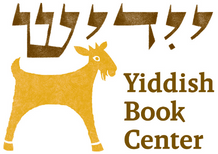Weekly Reader An Educated Working Class
November 14, 2021
It’s been said that one of the reasons Jewish immigrants played such a major role in the American labor movement is because they constituted, perhaps for the first time in history, a genuinely educated working class. There is truth to this. Most Jews, even if they never went to high school, were at least literate, and many immigrants who were forced to toil in sweatshops had a much higher level of education. And in their efforts to better themselves and improve their socioeconomic standing, they expressed an enthusiasm for further learning. Through collective libraries, pre-publication fundraising drives, popular newspapers, and public lectures, the Jewish masses became avid readers, and sometimes writers. They showed that literary activity was not for an elite group, but for everyone.
—Ezra Glinter
The Worker's Library
The thirst for knowledge and self-improvement wasn’t something Jews discovered in America. Rather, they brought it from Europe. Thus the Groshn-biblyotek, or Penny Library. Small enough to slip easily into a pocket, the Groshn-biblyotek booklets varied widely in subject matter and longevity, but all were cheap and affordable. Aimed at Yiddish-speaking workers in 1930s Poland, this ambitious venture ran for seven years, over that time developing into an influential and popular library of Jewish and general knowledge.
Read about the Groshn-biblyotek
Letters in a Bundle
The Bintel Brief—“Bundle of Letters”—was the iconic advice column in the Forverts. Begun in 1906 by editor Abraham Cahan, the column was a forum in which readers could share their stories, seek counsel, and even find relatives. The Bintel Brief was a valued resource for Jewish immigrants trying to establish a new American identity. These selections include a letter requesting advice regarding an unplanned pregnancy, the editor’s response, and a rare example of another reader (or in this case, a group of readers) writing to offer another opinion.
Read a selection from the Bintel Brief
Letters in a Box
Not everyone is so fortunate to have their great-grandfather’s literary activities documented for posterity. But for Buenos Aires-based journalist and translator Javier Sinay, one old Yiddish book had a personal connection. La caja de letras (The Box of Letters), about the origins of Argentinian Jewish journalism, was originally written in Yiddish in 1929 by the journalist and writer Pinie Katz. The book, which Javier translated from Yiddish into Spanish, looks back at the years 1898–1914, when around forty magazines and newspapers started. One of these, Der viderkol, was started by Javier’s great-grandfather, who immigrated from Belarus.
Listen to a podcast about The Box of Letters
Vrastata Trasmata!
The story “Vrastata Trasmata!” is typical of Jonah Rosenfeld’s writings. It features a main character who struggles with unexpressed feelings of alienation, having just arrived in New York as a virtually friendless immigrant from a European shtetl. The author foregrounds the frightening sense of dislocation many such newcomers experience on first entering a new environment. But the story is essentially comic, highlighting the breadth of the writer’s talents—not only as a tragedian and explorer of the dark side of human nature but also as an author sensitive to the nuances and possibilities of humor.
Read a translation of “Vrastata Trasmata!”
Reading the Paper
Despite widespread literacy among Jewish immigrants, not everyone could read and write. Still, they found ways to learn and stay informed. Anita Garlick, a Yiddish Book Center zamler in Sullivan County, shares stories of when she and her grandfather read the Yiddish newspaper to her grandmother, who had never learned how to read.
